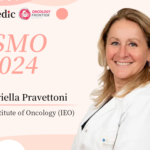
In the field of hematopoietic stem cell transplantation (HSCT), immunomodulatory mechanisms play a crucial role, affecting not only the success rate of the transplant but also the recipient's tolerance to the graft and their long-term health post-transplant. At the 12th Lu Daopei Hematology Academic Forum, Dr. Robert Negrin, former Chief of the Blood and Marrow Transplantation at Stanford University, shared a fascinating lecture on immunomodulatory mechanisms and transplantation. "Hematology Frontier" specially invited Dr. Robert Negrin for an exclusive interview, providing us with an international perspective on cutting-edge topics such as graft-versus-host disease (GVHD), graft-versus-tumor effect (GVT), and immune tolerance.Hematology Frontier:How can we modulate the immune regulatory mechanisms to reduce the incidence of graft-versus-host disease (GVHD) in allogeneic hematopoietic stem cell transplantation while maintaining graft-versus-leukemia (GVT) effects?
Dr. Robert Negrin:This is one of the major challenges of our field. How do we modulate graft versus host disease? The negative consequence of the transplant yet retain graft versus tumor effects, the positive aspects of the transplant. I showed you one approach of engineering, the graft to bring out certain cell populations. We think that has great potential to do exactly what we hope to achieve, which is what we learned from animal modeling. There are other strategies that other investigators are exploring. One particular one from Seattle from the Fred hutchin Cancer Institute involves depleting so called naive t cells, which we think are responsible for causing graft versus host disease.
Another strategy of done widely in Europe is to deplete so called Alpha beta t cells and retain the other t cell populations. So there are a number of different strategies, and it’s very difficult to know which one is the perfect strategy and they may all work and that’s fine. The end result has to be documented in clinical trials.
However, one of our challenges has been that the animal modeling is useful for dividing concepts, but it is not prove that a particular therapy or strategy is better than the next.
That has to be done through clinical trials. I showed you one example of taking that forward into a randomized clinical trial. That’s the type of evidence that we need to really document that a particular strategy is better as you can appreciate. Bone marrow transplantation is complicated. You’re trying to do different things. What we ultimately want is what we call grfsgdhd relapse, Free survival. And that’s the ultimate goal. A big part of our Challenge is that we have no way to measure whether you’ve retained the graft versus tumor effect other than following patients and making sure they don’t relapse. It’s hard work. It takes a long time, takes a difficult studies. And there probably is more than one strategy that will ultimately work is just a matter of defining and rigorously testing these different strategies.
Hematology Frontier:What new findings or strategies have been identified to enhance immune tolerance post-transplant and thereby improve long-term survival rates in patients?
Dr. Robert Negrin:Where you bring up a very interesting question, you brought up the concept of immune tolerance.So that’s what something remarkably happens after a transplant is that the donor becomes tolerant of the recipient. And I think that’s one of the truly black boxes of what we do in transplantation. We know it happens over a period of months. During that time patients are at great risk for various infections. They have to be followed to the transplant center there on lots of different medications. They can reactivate all kinds of infections. So that’s really one of the major unmet questions of how does immune tolerance occur. How do we accelerate it? And i’ll be honest, there are relatively few important. It’s a very important concept, but there’s been relatively little success. Various strategies that have been looked at are various site of kinds to try to accelerate new recovery. But to date, none of them have really born much fruit. It’s an area of ongoing investigation, and still a lot of a lot of work that needs to be done to try to figure that out.
Now, that could have obvious relevance in other settings. For example, we at Stanford have developed a concept based upon work from one of my colleagues, doctor Samuel stripper, who combines bone marrow transplantation with solid organ transplantation. The idea being you induced tolerance to the solid organ. So there’s lots of areas that could be helpful in. But we’re left now with recognizing this occurs, it takes months for it to occur, and we don’t yet know how to really influence it.
Hematology Frontier:Given the variability in immune responses among individuals, how important do you think personalized medicine is in post-transplant immune regulation, and how can this goal be achieved?
Dr. Robert Negrin:That’s a very big question, very important question. I would say that bone marrow transplantation is a great example of personalized medicine and meaning that we identify a donor based upon the personal genes, hla genes that the patient expresses.So that’s very much already a personalized medicine. How do we go? How do we more generalize those concepts? It is very difficult because it does require very specific donors for a particular patient. I think that highlights how important doing personalized medicine really is. I think as we learn more about disease, one of the unmet questions is, what is the graft versus tumor effect? How do we how do we know which characteristics of the patient’s disease is more susceptible to graft versus tumor effects versus other patients who may be more resistant? Will allow us to pick patients better, which patients would benefit from these therapies better than other patients.
And I think that’s a really a direction we could go in. But I would say the bone transplantation a is a great example of personalized medicine because of the need for finding a specific donors. Let’s not forget that in this field, one of the great achievements was developing so called national marrow donor program. There are now 33 million people around the world who volunteered to be a donor for someone they’ve never met before, which highlights how far you have to go to identify the personalized donor for a particular patient. So it’s a complicated problem. And we made a lot of progress. And we continue to search for better ways to identify disease risk and better donors for individual patients to reduce risk. All that has to be characterized by very well constructive clinical trials.
The other piece that I would want to mention is that it’s very important that we collect outcomes. I think that’s another area where the transplant field has been far ahead of other comparative fields. For example, in the United States, we are required by federal law to report our outcomes, so we collect Information, we collect data, and then we reported to centralize the repositories that allows us to really assess how we’re doing, how we compare to other centers. I think that’s critically important. And at least in North America, in the United States, not very commonly practiced, except in very isolated areas. And transplant is one of those areas that we really collect data.


